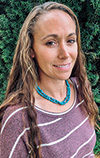Spring is on the horizon and producers are looking ahead toward grazing turnout. Preparation should include evaluation of all the potential bulls that may be turned out with cows. This evaluation is referred to as a breeding soundness exam (BSE).
A typical BSE will include a physical evaluation of the animal, measurement and evaluation of reproductive organs and evaluation of semen. Additional procedures that may be included in a BSE are mating ability, pelvic measurement and trichomoniasis testing. For semen evaluation, your veterinarian will take semen samples from the bull to evaluate for sperm cell concentration, motility and morphology.
This may also be an opportune time for trich testing. Especially important on communal grazing allotments is the control of trichomoniasis, a venereal disease which can negatively affect reproductive performance in cows.
Another evaluation done at this time will be measuring scrotal circumference, in which a larger measurement means a higher sperm production rate by that bull. Bulls with a larger circumference also tend to reach puberty at an earlier age as well as produce daughters that will mature earlier. To perform the evaluation of the bull’s reproductive organs, your veterinarian will examine for sores, lacerations, abscesses, scar tissue, warts and adhesions on both internal and external organs.
Finally, the bull will go through a physical examination. To be successful in breeding his share of cows, a bull needs to be able to see, eat, smell and move. Bulls with poor vision or other eye ailments such as pinkeye or cancer eye are likely to be dominated by other bulls and also unable to see a female’s visual signs of heat, reducing his breeding effectiveness. Bulls with worn teeth or lump jaw will struggle to eat, leading to less energy for breeding.
Bulls need to also have good body condition, being strong enough with some fat reserves. The level of condition will depend on age and size of the bull, the rangeland type, length of breeding season and number of cows he’s expected to service. Structural soundness of a bull’s feet and legs, as well as hips and shoulders, tend to be of the highest importance during the physical evaluation. Other conformation defaults such as stifling or foot rot may lead to a bull becoming lame shortly after being turned out, so the bull needs to be rendered sound before being turned out.
Many structural issues can be heritable and not only will cause lameness in the bull but will potentially be passed onto the calf crop. At this time, the bull should be classified as satisfactory, questionable or unsatisfactory.








